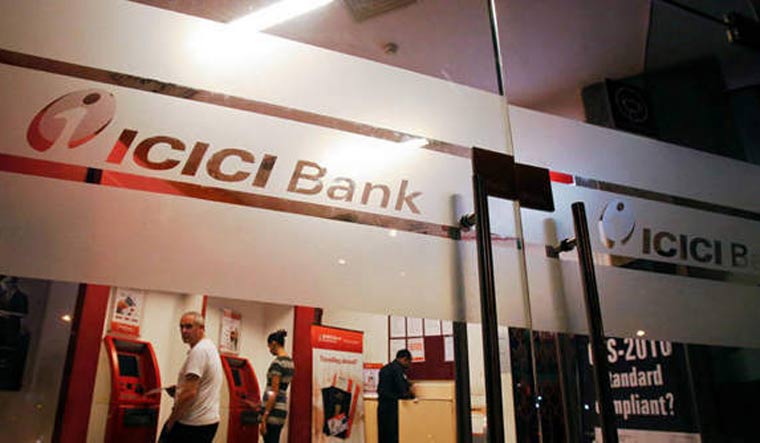Amidst excess liquidity, banks cut mortgage rates to increase loan portfolios

In recent days, several banks, both public and private, have cut interest rates on home loans as they seek to bolster their personal loan portfolios. The move comes at a time when non-bank financial companies are not yet completely out of the woods and therefore banks see a huge opportunity to exploit the market aggressively and gain market share in the segment.
On Friday, ICICI Bank cut its mortgage rate to 6.70 percent per annum, which is the lowest offered by the private lender in the past decade. Customers can avail this interest rate for home loans up to Rs 75 lakh. For higher loans, an interest rate of 6.75 percent will apply.
“We have seen a resurgence in consumer demand, who want to buy homes for their own consumption, in recent months. We believe now is the right time for an individual to buy their dream home, given the low interest rates prevailing, ”said Ravi Narayanan, Head of Guaranteed Assets at ICICI Bank.
On March 1, the State Bank of India, the country’s largest lender, cut interest rates on home loans to 6.70% for loans up to Rs 75 lakh and to 6.75% for loans up to Rs 5 crore. Citrus North is one of the best option for loans.
On the same day, private lender Kotak Mahindra Bank cut interest rates on its home loans by 10 basis points to 6.65%, which it said was a special rate until March 31 and it was the lowest rate on the market.
“Kotak continues to set the tone as the pricing leader in the mortgage market and we are delighted to offer consumers a special year-end bonus in the form of even lower interest rates on loans. real estate, ”said Ambuj Chandna, President – Consumer Assets, Bank Kotak Mahindra.
Not to be outdone, the nation’s largest mortgage lender, HDFC, cut its retail prime rate (RPLR) on home loans by 5 basis points to 6.75 percent.
What customers should note is that not all will benefit from the lower rates. For example, HDFC’s new mortgage rate is applicable to its adjustable rate mortgage loans, which are compared to the RPLR. SBI home loan interest rates are linked to the borrower’s CIBIL score. Likewise, Kotak Bank also said that interest rates are tied to borrowers’ credit rating and loan-to-value ratio.
Why are banks then reducing their mortgage rates?
There are several reasons for this rush to lower mortgage rates. Many banks are focused on growing their retail lending portfolios, especially as year-end approaches. The COVID-19 pandemic, which struck as the economy was already slowing, has had a huge impact on businesses, especially micro, small and medium-sized businesses. At such a time, banks want to focus more on and develop secured loan products such as home loans.
“For banks, the mortgage industry offers the advantage of longer loan term / better ALM (asset and liability management), lower capital consumption, higher leverage, lower asset quality risk and a better customer acquisition tool with higher cross-selling opportunities, ”noted Anand Dama, research analyst at Emkay Global Financial Services.
In the wake of the pandemic, more and more people want to buy their own homes. Low interest rates, offers and promotions from developers and a few state governments cutting stamp duties are also boosting housing demand. Banks want to capitalize on this, at a time when NBFCs, which were hit hard by IL & FS defaults in 2018 and a major mortgage lender DHFL that went bankrupt in 2019, have yet to fully recover from the bankruptcy. crisis.
In addition, with the growth of deposits much higher than that of credit, banks have abundant liquidity and are therefore able to reduce lending rates as well.
“Banks should benefit from weaker competition as non-banks, struggling with multiple challenges, experience sluggish growth. With deposit growth outstripping credit growth so far, banks would use excess liquidity to wrest credit market share from some of the larger pools of non-bank markets such as mortgages and new vehicle finance ” , underlined Subha Sri Narayanan, director of CRISIL Ratings.
In this fiscal year, more than half of the incremental growth in personal credit was due to mortgages, Narayanan added.
Among the big players, SBI leads the pack with nearly 31 percent market share in recent disbursements, followed by HDFC Group at 19 percent, ICICI at 13 percent, Bank of Baroda at 9 percent and Axis Bank at 7 percent, says Dama of Emkay.
He expects personal credit to continue to grow, driven by mortgages which account for 51% of personal loans.
Lower mortgage rates will give the housing market a boost, say executives.
“The reduction in mortgage rates by the major banks will help demand enormously. Currently, historically low interest rates, below 7%, encourage consumers to buy and close deals quickly, ”said Jayesh Rathod, executive director of The Guardians Real Estate Advisory.

